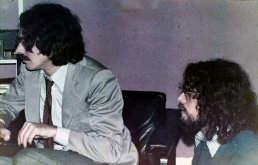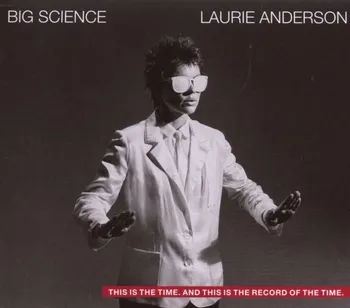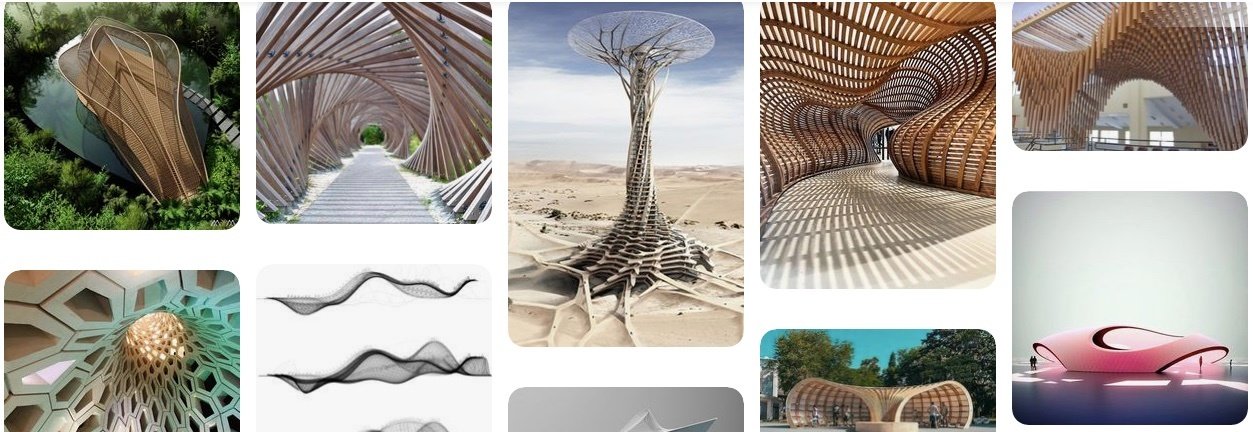Friedrich Kittler

Friedrich A. Kittler (June 12, 1943 – October 18, 2011) was a literary scholar and a media theorist. His works relate to media, technology, and the military.
Kittler's theory shies away from the Frankfurt School and hermeneutics of Gadamer and Habermas, the dominant literary scientific frameworks in Germany of the 1970s and 80s. Rather, it draws from Heidegger, Foucault (discourse analysis, archaeology), Lacan (the orders of the real, symbolic and imaginary), and Shannon (information theory), but also from Hegel (Seinsgeschichte), Nietzsche (genealogy), Derrida, Turing (universal machine), McLuhan, Virilio, and Pynchon.
*His elder half-brother Wolf was a former wireless operator who drew on his wartime expertise to assemble illegal radios using parts scavenged from abandoned military aircraft.

His Habilitation, Discourse Networks 1800/1900 (1984): "technologies and institutions that allow a given culture to select, store and produce relevant data"

Kittler sees an autonomy in technology and therefore disagrees with Marshall McLuhan's reading of the media as "extensions of man": "Media are not pseudopods for extending the human body. They follow the logic of escalation that leaves us and written history behind it.
(Kittler in Geschichte der Kommunikationsmedien. In: Jörg Huber, Alois Martin Müller (publishers): Raum und Verfahren.)
Consequently, he sees in writing literature, in writing programmes and in burning structures into silicon chips a complete continuum: "As we know and simply do not say, no human being writes anymore. [...] Today, human writing runs through inscriptions burnt into silicon by electronic lithography [...]. The last historic act of writing may thus have been in the late seventies when a team of Intel engineers [plotted] the hardware architecture of their first integrated microprocessor." (Kittler, Es gibt keine Software. In: ders.: Draculas Vermächtnis. Technische Schriften.)
Automatické psaní
1 the Road
1 the Road is an experimental novel composed by artificial intelligence (AI). Emulating Jack Kerouac's On the Road, Ross Goodwin drove from New York to New Orleans in March 2017 with an AI in a laptop hooked up to various sensors, whose output the AI turned into words that were printed on rolls of receipt paper. The novel was published in 2018 by Jean Boîte Éditions.
Ross Goodwin
has often used neural networks to create poetry and screenplays. Notable works include the short film Sunspring, starring Thomas Middleditch and directed by Goodwin's frequent collaborator Oscar Sharp.
His Master's Thesis at New York University was a project called "Narrated Reality"
(vytváření definic slov)
Automation&creation
"automatické psaní"
- témata automatismu, dominance média - a nevědomí
Digital Writer
Ráno přišel email, nařizující všem zaměstnancům povinný home office. Zprvu to vypadlo jako skvělý nápad, ale byla tu jedna obtíž. Neměl jsem tušení, kde jsem doma. Všechno, co jsem věděl, bylo, že to chci zjistit a odejít tam. Šel jsem tedy za přítelem a společně jsme pracovali po celý rok. Doufám, že až skončíme, budu mít taky něco takového jako home office. Musím přiznat, že žárlím. Přál bych si mít notebook pro sebe; bylo by to jako získat druhý domov, jako osamostatnit se od rodičů. Ale nemám ho. Jen bezcílně bloumám kolem a nemůžu si pomoct. Jistě, vím, že mám štěstí, protože mám opravdu pěknou kancelář a taky mám pohledného přítele. A tak pokračuju v práci.
Digital Writer, březen 2020
Lucie spolkne poznámku a soustředí se na strategický cíl. Zadní vrátka. Není otázkou, zda to bude možné, už se to děje. Existuje jen málo věcí, které ji dráždí více než lidé, kteří nejsou dostatečně přesvědčeni, že dělají správnou věc. Konečně stojí v kuchyni svých rodičů, kteří oba zmateně sledují televizi v posteli. Když zaklepe, dveře se rozhoří. S povzdechem odstrčí tvrdohlavou zeď lhostejnosti a otevře poštu. Je od ní: maily, nezodpovězené, zapomenuté, zmatené. Nepřijímá je. Nepřijme je. Pokud si je něčím jistá, pak tím, že se opravdu nechce obtěžovat. Ne že by na to nebyla zvyklá. Přesto se postará o poštu bez jakéhokoli pocitu povinnosti a dokonce zaklepe na dveře laboratoře, kam dochází na zavolání. Nic nenasvědčuje tomu, že by mu měla co říct. Chvíli na ni upřeně hledí, pak se usměje a dvakrát zaklepe. Krátký, ostrý střih. Vstoupí do pochmurné chodby, světlo se rozlévá skrz rozbité sklo. Popadne ji za loket a srazí ji zpět. Cítí nebezpečí a spěchá pryč. Opouští scénu v příšerném stavu, s odříznutou hlavou a zlámanými končetinami. Putuje po zatemnělých halách univerzity, v antiseptickém světle, stopy po krvi stále slabě viditelné v šeru. Vstoupila do dveří experimentální místnosti a studený vzduch se do ní zakousl jako jedovatý had. Tvor ji sleduje a vypadá pobaveně. Nechává dveře za sebou, stvoření za ní pomalu zavírá. Proklouzne drsným sněhem pokrytým terénem a stvoření ji sleduje. Nemá žádnou naději, že bude někdy schopna uniknout, a už vůbec ne, pokud ji opustí.
Gramophone,
Film,
Typewriter
1986
schématismus vnímatelnosti (9)
Pynchon: válka médií
Úvod
absolutní vědomí v nekonečné uzavřené smyčce
konvergence
(evoluce médií z Mcluhana/ remediace)
to, že něco přestalo nepsat samo sebe
Thomas Alva Edison
Médium a specifická časovost
1. dějiny jako to, co bylo zapsáno; (Foucalt a) taulogie dějin)
2. písmo jako oslava záznamového monopolu Boha
3. literatura a vytržení
4. elektřina:
"Jakmile začnou být vzpomínky a sny, smrt a přízraky technicky reprodukovatelnými, stane se schopnost halucinace při psaní a čtení přebytečnou."


war on mind
Kittler/ Lacan
reálné
imaginární
symbolické
gramofon
film
typewriter

| oko | kino | imaginárno |
| ucho | fonograf | reálno |
| mozek | psací stroj | symbolično |
Symbolično: písmo, informace (diference), stroj, výpočetní technologie
R. M. Rilke: Prazvuk
Robert A. Moog: vokodér
(The vocoder was invented in 1938 by Homer Dudley at Bell Labs and has been used extensively as an electronic musical instrument.)
Hendrix
Renard: Sirény
Mynona: Goethe

1. Jak se liší pojetí média u McLuhana a Kittlera?
2. Kterého z představitelů francouzské psychoanalýzy můžeme pokládat za Kittlerův zdroj?
3. Jaké tři oblasti skutečnosti na základě četby tohoto autora vymezuje?
4. A k jakým technologiím je přiřazuje?
Generative Art
Mělo se to stavět samo: růst.
"emergent"
Margaret Boden and Ernest Edmonds have noted the use of the term "generative art" in the broad context of automated computer graphics in the 1960s, beginning with artwork exhibited by Georg Nees and Frieder Nake in 1965.
"Generative art" and related terms was in common use by several other early computer artists around this time, including Manfred Mohr. The term "Generative Art" with the meaning of dynamic artwork-systems able to generate multiple artwork-events was clearly used the first time for the "Generative Art" conference in Milan in 1998.
From the mid-1990s Brian Eno popularized the terms generative music and generative systems, making a connection with earlier experimental music by Terry Riley, Steve Reich and Philip Glass.
Harold Cohen's AARON system is a longstanding project combining software artificial intelligence with robotic painting devices to create physical artifacts.
Steina and Woody Vasulka are video art pioneers who used analog video feedback to create generative art. Video feedback is now cited as an example of deterministic chaos, and the early explorations by the Vasulkas anticipated contemporary science by many years.
Software systems exploiting evolutionary computing to create visual form include those created by Scott Draves and Karl Sims.
The digital artist Joseph Nechvatal has exploited models of viral contagion.
Vasulkas
Nechvatal
viractualism
Conway's Game of Life
Digital morphogenesis

Philip Beesley
Living Architecture Systems Group
Can architecture integrate living functions?
How can we design kinetic, living architecture that engages with visitors during extended interactions and enhances human experience in an immersive environment?
How do humans respond to these evolving interactions, in a process of mutual adaptation?

Astrocyte, connects chemistry, artificial intelligence, and an immersive soundscape to create a living piece of architecture that responds to the presence of viewers.
Quayola
Joshua Davis
LIA
Director/ Flash
The artist’s primary working material is code, which consists of LIA translating a concept into a formal written structure that then can be used to create a “machine” that generates real-time multimedia outputs. Since her concept is fluid – opposed to the formality of the written code that requires engineered precision – the translation process between machine and artist can be viewed like a conversation. The process is repeated until LIA is satisfied with the machine’s interpretation; at which point the generative framework, in which the artwork can develop, is considered finished.

Processing
Casey Reas&Ben Fry
Reas: Signals
Jared Tarbell

Mario Klingemann
GANs
Artbreeder
Anna Ridler
Helena Sarin
...
...
Federico Diaz


What's next?
Friedrich Kittler/ Generative Art
By Dita M. Org
Friedrich Kittler/ Generative Art
- 267



